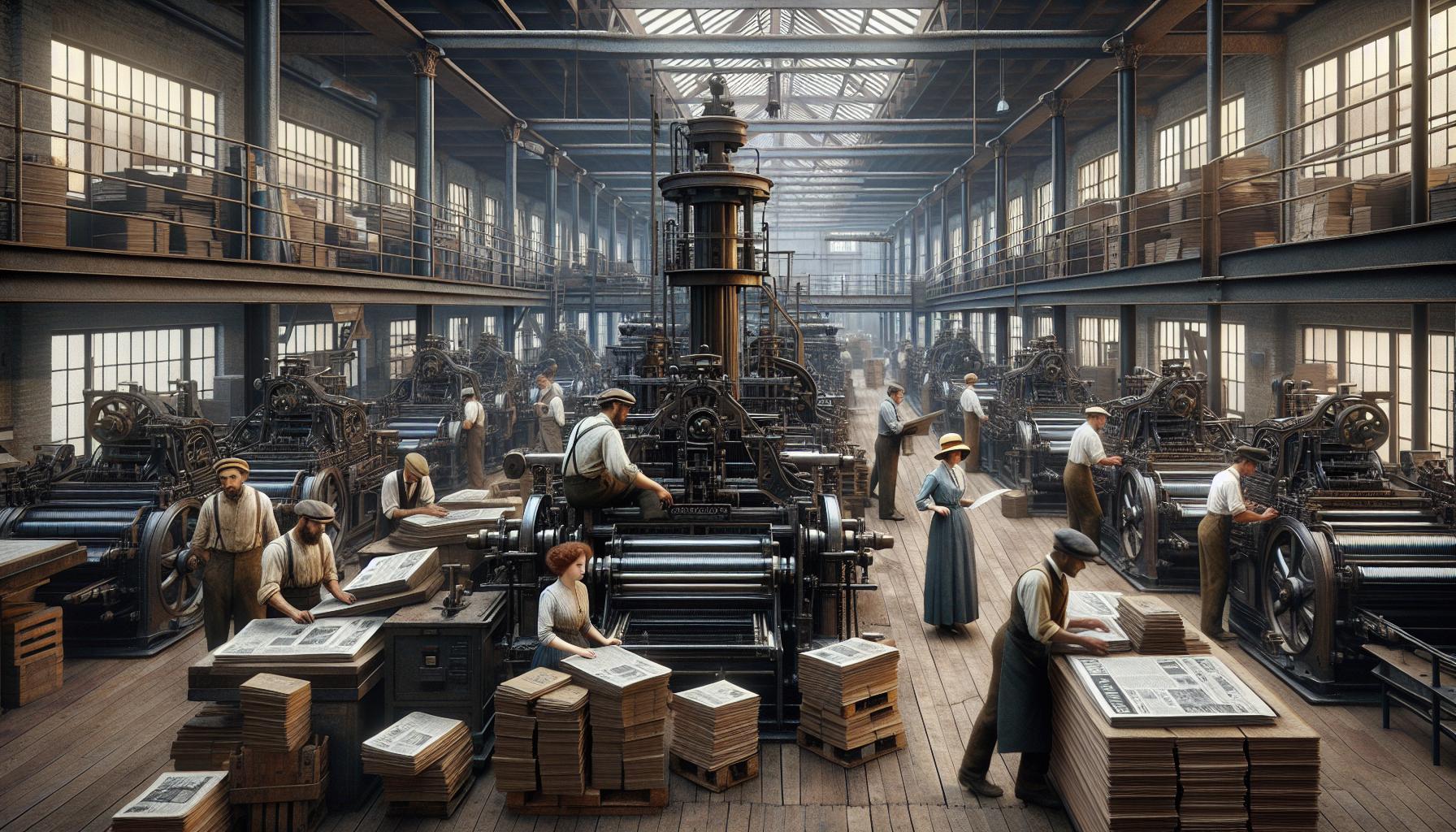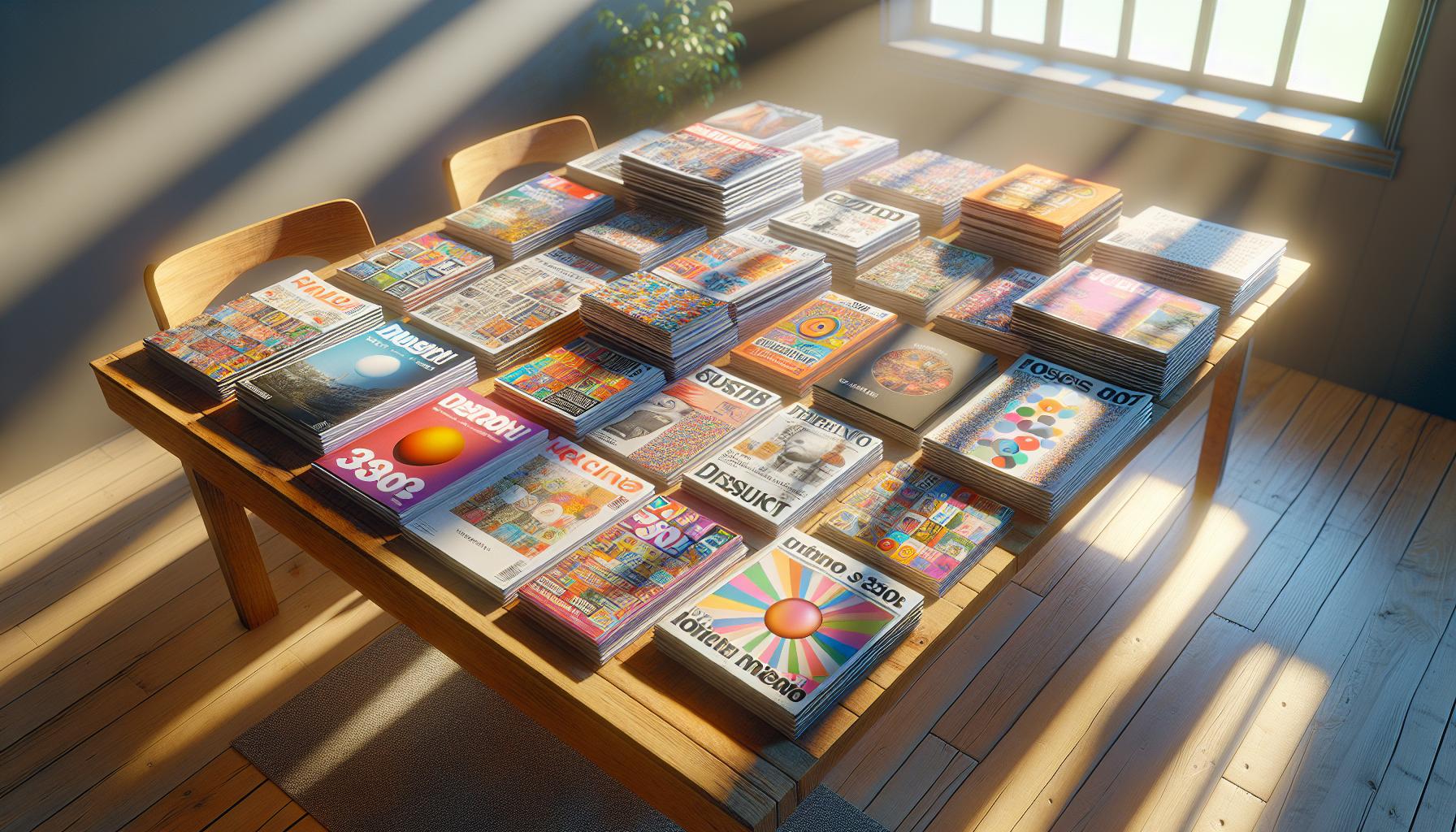Print media represents one of the oldest and most influential forms of mass communication in human history. From newspapers and magazines to books and brochures this traditional method of sharing information has shaped societies and cultures for generations.
In today’s digital age print media continues to hold its ground as a tangible and trusted source of information. While many might assume that digital platforms have completely taken over the traditional print industry still maintains a significant presence in marketing education and entertainment. Understanding print media’s definition scope and impact helps reveal why it remains relevant in our increasingly digital world.
What Is Print Media
Print media comprises all forms of printed materials used for mass communication, including newspapers, magazines, books, brochures, flyers, catalogs, direct mail, and packaging. It’s a tangible form of communication that uses physical printing methods to convey information to a target audience.
Key Characteristics of Print Media
- Permanence: Print media creates lasting physical records that readers can store, reference, and archive
- Credibility: Established print publications maintain high editorial standards through fact-checking processes
- Tactile Experience: Physical interaction with printed materials engages multiple senses through texture, weight, and design
- Visual Impact: High-resolution images, typography, and layout elements enhance message retention
- Geographic Targeting: Publications reach specific local, regional, or national audiences
- Extended Shelf Life: Print materials remain accessible without requiring technology or internet connectivity
| Category | Examples | Primary Use |
|---|---|---|
| Periodicals | Newspapers, Magazines, Journals | News, Entertainment, Research |
| Marketing Materials | Brochures, Flyers, Posters | Advertising, Promotion |
| Books | Textbooks, Novels, Reference Books | Education, Entertainment |
| Direct Mail | Postcards, Catalogs, Letters | Marketing, Communication |
| Packaging | Labels, Boxes, Wrappers | Product Information, Branding |
| Business Materials | Business Cards, Letterheads | Professional Communication |
| Publications | Newsletters, Reports, Manuals | Information Distribution |
Historical Evolution of Print Media

Print media’s journey spans over five centuries of technological advancement and cultural transformation. This evolution showcases the progression from manual printing processes to sophisticated digital printing technologies.
From Gutenberg to Modern Printing
Johannes Gutenberg’s invention of the movable type printing press in 1440 revolutionized information dissemination. The printing press enabled mass production of books at 1/8th the cost of hand-copied manuscripts, producing 3,600 pages per workday compared to only 40 pages by hand copying. Key technological milestones include:
- Steam-powered printing presses (1810s): Increased production speed to 1,100 sheets per hour
- Linotype machines (1884): Automated typesetting through keyboard operation
- Offset printing (1875): Enhanced image quality through indirect printing transfer
- Digital printing (1990s): Enabled print-on-demand capabilities with minimal setup costs
Golden Age of Print Publications
The period between 1890-1920 marked the zenith of print media’s influence on society. During this era:
| Publication Type | Peak Circulation (1920s) |
|---|---|
| Daily Newspapers | 28 million copies |
| Weekly Magazines | 11 million copies |
| Monthly Publications | 7 million copies |
- Mass-market magazines: Introduction of Life (1883), National Geographic (1888) Time (1923)
- Newspaper chains: Formation of major publishing groups like Hearst Corporation
- Color printing: Implementation of four-color process printing in magazines
- Specialized publications: Emergence of trade journals industry magazines
- Photojournalism: Integration of photography in news reporting
Components of Print Media
Print media integrates multiple elements to create effective communication materials. These components work together to convey information enhance readability and capture reader attention.
Visual Elements
Visual elements in print media comprise images photographs illustrations graphics charts diagrams and infographics. High-resolution photographs create immediate visual impact while illustrations add artistic flair to publications. Data visualization tools like charts graphs maps provide clear representation of complex information. White space balances visual elements creates breathing room between content sections and improves overall readability.
| Visual Component | Primary Function | Usage Rate in Print Media |
|---|---|---|
| Photographs | Reality documentation | 65% |
| Illustrations | Creative expression | 45% |
| Infographics | Data visualization | 35% |
| Charts/Graphs | Statistical presentation | 30% |
- Grid Systems: Organize content into columns rows sections
- Headers: Guide readers through content hierarchy
- Pull Quotes: Highlight key information from main text
- Text Alignment: Creates visual flow balance between elements
- Line Spacing: Improves readability maintains visual harmony
- Margins: Define content boundaries create professional appearance
| Typography Element | Design Purpose | Impact on Readability |
|---|---|---|
| Serif Fonts | Print text | +28% comprehension |
| Sans-serif Fonts | Headlines | +35% scanning speed |
| Line Spacing | Text flow | +20% reading speed |
Print Media vs Digital Media
Print media maintains distinct characteristics from digital media in terms of accessibility, engagement format, and content delivery methods. The comparison reveals unique strengths and adaptations in both mediums across various communication aspects.
Advantages of Print Media
Print media offers tangible benefits that differentiate it from digital platforms:
- Enhanced Retention: Readers retain 70% more information from print materials compared to digital content
- Tactile Experience: Physical interaction creates stronger emotional connections through texture, weight, and paper quality
- Focused Attention: Print readers spend an average of 20 minutes with magazines versus 2 minutes on digital articles
- Credibility Factor: 82% of consumers trust print advertisements more than digital ads
- Longevity: Print materials remain accessible without technological requirements or internet connectivity
- Brand Recognition: Print advertising generates 70% higher brand recall compared to digital alternatives
- Integration Requirements: Print publications incorporate QR codes, augmented reality features, and digital editions
- Production Changes: Digital printing enables:
- Variable data printing
- Print-on-demand services
- Personalized content delivery
- Market Adaptations:
- Hybrid subscription models
- Cross-platform content strategies
- Digital archive creation
- Distribution Evolution: Print outlets develop:
- Online presence
- Social media engagement
- Mobile applications
- Analytics Integration: Print campaigns track:
- Response rates
- Engagement metrics
- ROI measurements
| Metric | Print Media | Digital Media |
|---|---|---|
| Average Engagement Time | 20-25 minutes | 2-3 minutes |
| Trust Factor | 82% | 61% |
| Brand Recall | 70% | 44% |
| Information Retention | 70% | 48% |
Role of Print Media in Modern Communications
Print media maintains a distinctive position in modern communications through its tangible presence and proven effectiveness across multiple sectors. Its integration with digital technologies creates a hybrid communication approach that leverages the strengths of both mediums.
Marketing and Advertising Applications
Print media generates 70% higher brand recall rates compared to digital advertising campaigns. Magazines deliver targeted advertising messages to specific demographic groups through specialized publications like fashion magazines, business journals or industry catalogs. Direct mail marketing achieves a 4.4% response rate, compared to 0.12% for email campaigns.
Key marketing applications include:
- Custom magazines delivering branded content to loyalty program members
- Retail catalogs featuring product photography with detailed specifications
- Direct mail pieces incorporating personalized offers based on purchase history
- Event programs providing sponsorship opportunities with extended visibility
- Product packaging that communicates brand values through design elements
Educational and Cultural Significance
Print materials account for 65% of academic content delivery in educational institutions. Textbooks, academic journals and educational supplements provide structured learning experiences through:
Educational Impact:
- Standardized textbooks ensuring consistent curriculum delivery
- Academic journals facilitating peer-reviewed research distribution
- Study guides enabling self-paced learning programs
- Educational worksheets supporting hands-on skill development
- Reference materials offering in-depth subject exploration
- Literary magazines preserving creative writing traditions
- Art publications documenting visual cultural heritage
- Special interest periodicals connecting community groups
- Historical archives maintaining printed records
- Cultural event programs enhancing audience engagement
| Print Media Format | Average Engagement Time | Information Retention Rate |
|---|---|---|
| Textbooks | 45 minutes | 85% |
| Academic Journals | 30 minutes | 75% |
| Educational Magazines | 25 minutes | 70% |
| Study Guides | 20 minutes | 65% |
Future of Print Media
Print media continues to evolve through technological integration and market adaptation. The industry embraces innovative solutions while maintaining its core strengths in delivering tangible, trustworthy content.
Emerging Trends and Innovations
Digital integration transforms traditional print through several key developments:
- Smart Paper Technology: Electronic paper displays enable dynamic content updates on printed materials while maintaining paper-like readability
- Augmented Reality Integration: Print publications incorporate AR markers linking to interactive digital experiences through smartphone apps
- Variable Data Printing: Customization of individual print pieces with unique text graphics or images based on customer data
- Sustainable Materials: Eco-friendly papers biodegradable inks recycled materials reduce environmental impact
- Haptic Printing: Enhanced tactile experiences through specialized coating techniques textures embossing
| Innovation Type | Adoption Rate | Market Impact |
|---|---|---|
| AR Integration | 45% | $4.2B by 2024 |
| Smart Paper | 28% | $2.8B by 2025 |
| Variable Printing | 63% | $5.6B by 2023 |
The print industry adopts these technologies to create hybrid experiences:
- Cross-platform campaigns linking print QR codes to digital content
- Interactive product catalogs with embedded AR experiences
- Personalized direct mail campaigns using variable data printing
- Smart packaging with NFC tags for product authentication
- Environmental certifications for sustainable print materials
These innovations expand print media’s capabilities while preserving its distinctive advantages in engagement trust brand recall.
Conclusion
Print media stands as a resilient force in modern communication despite the digital revolution. Its unique advantages in information retention brand recall and tangible engagement continue to make it an invaluable tool across marketing education and cultural preservation.
The fusion of traditional print with innovative technologies like AR and smart paper demonstrates the medium’s adaptability. This evolution ensures that print media remains relevant while maintaining its core strengths of credibility permanence and tactile experience.
As we move forward print media’s role in a hybrid communication landscape appears stronger than ever. It’s not just surviving but thriving through strategic adaptation and technological integration making it an enduring pillar of mass communication.
